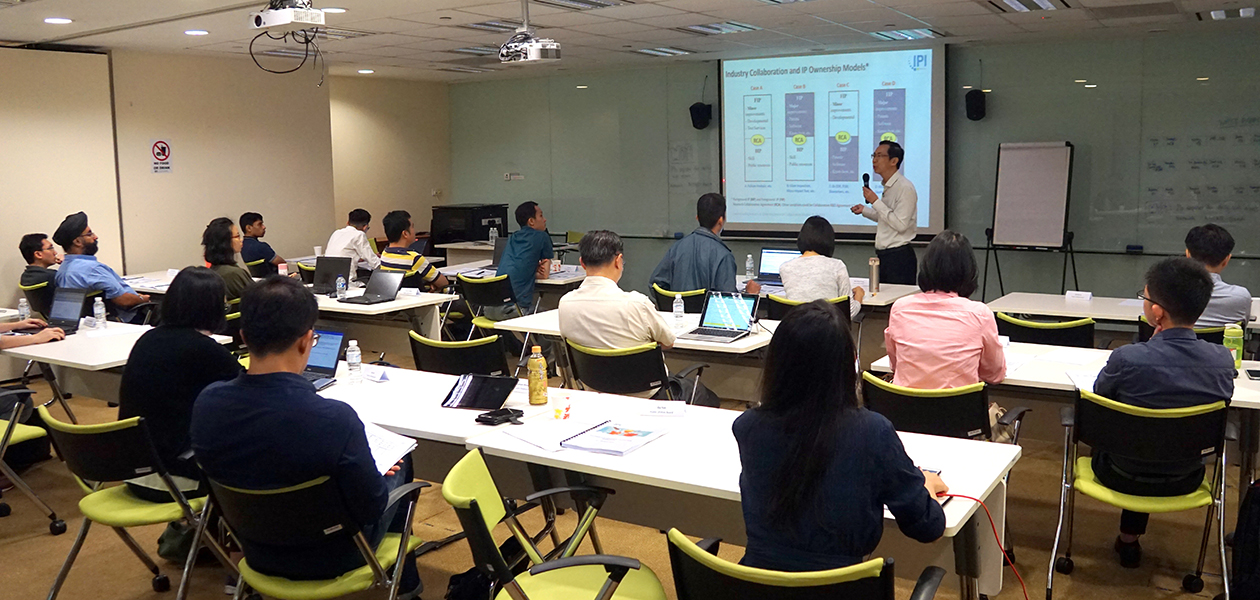The insider view on technology commercialisation
Explore the possibilities for industry-academia collaboration (and more) at IPI's Technology Commercialisation Workshop
Business-as-usual no longer cuts it as a viable corporate strategy in a world of technological disruption. Constant innovation is now viewed as a critical strategy for growth, so companies are increasingly looking beyond their four walls for ideas that add value to their products and processes.
Like soil that supports the sprouting of seedlings, academia can be a powerful contributor of scientific discoveries, novel technologies and deep expertise to industry. At the same time, companies can provide clear use cases and a path to commercialisation for inventions spawned in an institute of higher learning (IHL).
But tapping into this potentially synergistic relationship is easier said than done. Industry and academia have different objectives and distinct modes of operation, which could lead to friction when establishing innovation partnerships. IPI thus seeks to help bridge industry and academia by sharing insights and best practices for research collaboration as part of its inaugural Technology Commercialisation Workshop.
Setting the tone for collaboration
Fundamental to the formation of successful industry-academia partnerships is an understanding of where each party stands on the inputs and outputs of research activities, said Dr Sze Tiam Lin, senior director of IPI, during the workshop.
In this context, there are two classes of intellectual property (IP)—background and foreground IP—that should be clearly defined in any research collaboration agreement (RCA), collaborative R&D agreement, or equivalent contract. Background IP refers to pre-existing IP that a party brings to a research project, while foreground IP refers to IP that may be generated in the course of R&D.
However, concerns over technology disclosure often cast a shadow over industry-academia collaborations. Neither side wants to reveal too much about their capabilities, yet without being able to discuss technical specifications in detail, no RCA can be formulated.
Dr Sze offered some advice for innovators who find themselves in such catch-22 situations: “You can consider signing a non-disclosure agreement before the RCA. If greater protection of confidentiality is needed prior to the signing of an RCA, inventors can also perform a quick IP filing, or file a provisional application.”
Dr Sze also suggested focusing on the outcome of the technology, rather than the method, noting that this is how IPI features technologies on its online marketplace without running into problems with disclosure.
License to succeed
While it is useful to know how to navigate RCAs, Dr Sze also stressed the importance of understanding the different—and sometimes conflicting—perspectives of the various stakeholders coming to the negotiating table.
For example, companies, seeking a competitive advantage in their industry, would naturally prefer exclusivity to IP derived from collaborative R&D with IHLs. Yet, IHLs usually want to reserve the right to practice licensed inventions and allow other non-profit government organisations to do so—sometimes referred to as Freedom-to-Operate.
In such scenarios, a middle ground could be found, perhaps by embedding a maximum time frame for exclusive licensing of foreground IP, said Dr Sze. He added that when exclusivity is being tabled, milestones ought to be set to ensure that the technology is actually put to use. “You should set conditions to achieve a certain sales target, or achieve a certain production scale, or capture a certain market, and so on,” he said.
A spectrum of possibilities
Expanding the discussion beyond RCAs and IP licensing, Dr Sze also highlighted that research collaborations are not the only way industry and academia can benefit from working with each other. Alternative models of engagement include consultancy, participation in consortia and even access to a university’s talent pipeline.
Although less known in Singapore than in the US, Dr Sze noted that faculty at IHLs could be paid a fee by a company for their expertise. “Under this model, foreground IP is typically owned by the company,” he said, but “if there is a background IP before the commencement of consultancy, that belongs to the institution and should be licensed appropriately.”
Meanwhile, collaboration that involves multiple parties from industry and IHLs are known as consortia. Depending on the membership fee for joining the consortia, or the amount of publicly available funding, IP ownership and rights of use can be negotiated among stakeholders. “A typical scenario is for IHLs to own the IP and for members to have non-exclusive rights on IP. Exclusivity can be negotiated on a case by case basis,” said Dr Sze. Hence, industry-academia collaboration can take on many forms, each with its own advantages and considerations, he concluded.
Should companies, academics and staff at technology transfer offices be interested in learning more about strategies to take innovation out of the labs and into the marketplace, they are welcome to sign up for IPI’s next Technology Commercialisation Workshop on 12 and 13 September 2019.

